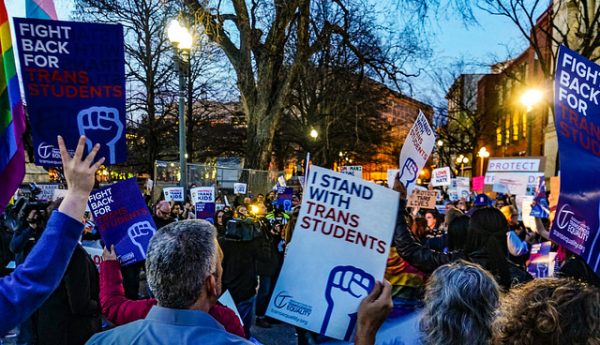
Despite increased awareness surrounding transgender identities and experiences, the National Coalition of Anti-Violence Programs (NCAVP) has tracked 36 anti-LGBTQ homicides in 2017 alone, 16 of whom were transgender women of color. Along with President Trump’s recently proposed military ban of transgender persons, there is evidence that personal prejudices and institutional discrimination continue to affect the lives of those in the trans community.
One way institutions like the military discriminate against transgender individuals is by advancing the assumption that trans bodies are a problem and should conform to “normal” standards. For example, medical professionals that work with transgender patients often discourage them from undergoing transitional surgery too soon. This discouragement reinforces traditional ideas that treat gender and sex as the same thing, and recognize both as binary. This discrimination shapes psychological and physical well-being, as transgender people who appear as gender nonconforming have a greater risk of engaging in self-harm acts, including suicide.
- Georgiann Davis, Jodie M. Dewey, and Erin L. Murphy. 2015. “Giving Sex: Deconstructing Intersex and Trans Medicalization Practices.” Gender & Society 30(3): 490-514.
- Lisa R. Miller and Eric Anthony Grollman. 2015. “The Social Costs of Gender Nonconformity for Transgender Adults: Implications for Discrimination and Health.” Sociological Forum 30(3): 809-831.
Transgender people are also at a greater risk of being the victims of violence. Surveys indicate that roughly 50% of transgender people report experiences of sexual violence or assault. The continuous threat of violence influences everyday decision making and quality of life across communities. For example, transgender women are more likely to perceive an association between acts of physical violence with sexual assault. Moreover, individuals transitioning from male-to-female are more likely to experience violent victimization than those transitioning from female-to-male, with a heightened risk during periods of transition and gender ambiguity.
- Rebecca L. Stotzer. 2009. “Violence Against Transgender People: A Review of United States Data.” Aggression and Violent Behavior 14(3): 170-179.
- Doug Meyer. 2012. Violence Against Queer People: Race, Class, Gender, and The Persistence of Anti-LGBT Discrimination. Rutgers University Press.
- Daniella Jauk. 2013. “Gender Violence Revisited: Lessons from Violent Victimization of Transgender Identified Individuals.” Sexualities 16(7): 807-825.

Comments